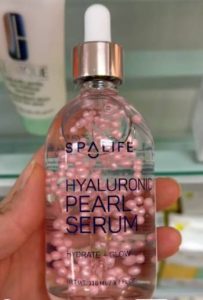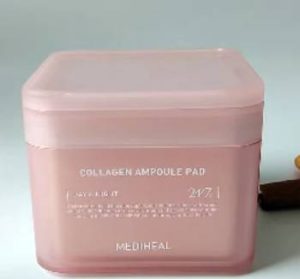If you’re debating between the Medicube Microcurrent Device and the NuFACE Trinity, you probably want to know which gives you firmer skin, smoother texture, and better results.
I’ve used both devices over several months and this review shares honest experiences, key features, pros and cons, and which one made the most difference in my routine.
By the end, you’ll know which device suits your skin goals and lifestyle best.
Comparison Table: Medicube Vs. NuFACE
| Feature | Medicube Microcurrent Device | NuFACE Trinity (and attachments) |
| Microcurrent Output | Gentle, low-intensity pulses | Adjustable 0.5 mA to 1.2 mA |
| Attachments & Accessories | Single wand device without interchangeable heads | Interchangeable attachments (Facial, Eye, Lips) |
| Battery / Power | USB rechargeable, moderate runtime | USB charging plus replaceable battery |
| Results Timeline | Soft lift in 3–4 weeks | Noticeable firmness in 5–7 days |
| Skin Types | Sensitive skin-friendly | Designed for most skin types with optional gels |
| Price Point | Lower cost | Premium tier pricing plus add-on attachments |
| Noise / Sensation | Quiet, tingly warmth | Slight buzzing or pulsing, adjustable intensity |
| Warranty / Support | 1 year standard | 2 year, with strong customer service |
My Real-Life Experience with Medicube and NuFACE
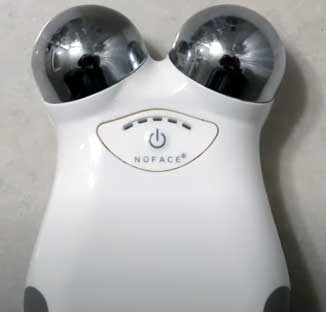
When I first tried the Medicube microcurrent device, I was drawn in by its compact size and gentle pulses.
Setting it up was simple—charge via USB, apply conductive gel, and glide it along jawline and cheekbones.
After about three weeks of using 4–5 times per week, my skin felt noticeably firmer, especially along the jaw.
Even crow’s-feet looked smoother and less crepe-like under my eyes. Because the output is gentle, it felt relaxing and never irritated my sensitive skin.
Next, I introduced the NuFACE Trinity system into my routine. The customizable intensity and targeted attachments like the eye and lip fins made a difference.
By day five of daily use, I saw more visible lift around the brows, under the chin, and reduced nasolabial lines.
The pulsing sensation is noticeable but still gentle when set lower. After finishing a month of alternating sessions with NuFACE and Medicube, I prefer NuFACE for fast results and versatility—I can treat lips, eye creases, and even jawline with different attachments.
Medicube is excellent if you want a compact, economical device with softer output that avoids skin tightening side effects.
NuFACE, with customizable settings and visible flattening of fine lines, feels more powerful and flexible. Both delivered skin lift and smoothing—just at slightly different paces and intensities.
Portability and Daily Use Experience
One of the big factors that influenced my long-term commitment to these devices was how easy they were to use every day.
Medicube’s compact design truly shines in this area. It fits comfortably in your hand, doesn’t weigh much, and is slim enough to throw in a travel pouch. That matters when you’re trying to build a consistent routine.
I found myself using it more regularly because it felt effortless. Plug it in, swipe it over your skin, and done.
NuFACE, on the other hand, feels a bit more like a professional-grade device, which comes with some pros and cons.
It has a larger body, a docking station, and you’ll often need to swap out attachments or deal with charging it more frequently.
It’s not a hassle by any means, but it takes more intentional setup. For travel or quick sessions, I sometimes left it behind simply because of the bulk.
In terms of noise and sensation, both are very quiet. I barely noticed Medicube during use—no buzzing or uncomfortable heat.
NuFACE emits a slight pulse noise depending on your intensity setting. It’s not annoying, but it’s something to be aware of.
Ultimately, Medicube is more grab-and-go, while NuFACE feels more like a treatment session.
If portability and simplicity are top priorities for you, Medicube may win that round. But if you’re okay with a slightly more involved setup in exchange for advanced features, NuFACE will serve you well.
Long-Term Skin Impact and User Feedback

After months of consistent use with both devices, I started to notice some clear differences in how my skin looked and felt—and I also paid attention to how others in my circle reacted. Let’s talk long-term effects.
Medicube gave me subtle, cumulative results. My skin became smoother, with a more balanced tone.
I didn’t get dramatic lifting, but there was definitely improvement in firmness, especially around the jawline and under my eyes. It’s the kind of tool you stick with if you’re okay with gradual progress.
And that’s actually what many online reviewers also confirmed—it’s consistent, but not aggressive.
NuFACE, by contrast, gave quicker and more visible lifting—particularly noticeable around the eyebrows and cheekbones.
My facial contours looked sharper after just two weeks, and those results held up better throughout the day.
If I missed a session or two, I could tell. So in a way, it held me more accountable to my routine.
User reviews generally back this up. Many praise NuFACE for its “instant lift” effect, especially when prepping for events or photo days.
But some find it irritating at higher intensities or too powerful for sensitive skin. That’s where Medicube wins favor—it’s non-invasive, beginner-friendly, and more forgiving.
Neither is magic overnight, but with patience and proper use, both will change your skin for the better. Just choose whether you prefer slow-and-steady or high-performance and targeted lifting.
Cost Efficiency and Value Over Time
I know firsthand that investing in beauty tools can be overwhelming. That’s why I always evaluate whether a product is worth its price long term—not just at checkout.
Both Medicube and NuFACE come with very different price tags, and what you’re paying for isn’t just hardware—it’s the experience and support.
Medicube tends to cost significantly less upfront. That makes it a great entry-level device, especially if you’re not sure microcurrent is for you.
There’s no need for attachments, and you won’t feel pressured to buy extra gels or accessories unless you want to.
Replacement costs are minimal, and customer service has been responsive when I reached out for a minor issue.
NuFACE, while pricier, offers a more premium system. But it’s not just the device—you’ll likely end up purchasing specialized attachments (like the ELE for lips and eyes), gels, and possibly even backup batteries.
If you plan to go all-in on sculpting and targeting multiple areas of the face, it becomes a worthwhile investment. Over time, though, the total spend can easily double or triple the Medicube cost.
If you’re someone who’s disciplined with daily treatments and wants the fastest, most visible results, NuFACE offers good value for its price.
If you’re budget-conscious or just starting out, Medicube will still give you a solid return on your investment—just on a slower track.
It all depends on how you want to prioritize performance, customization, and long-term usage.
Pros and Cons of Medicube vs NuFACE
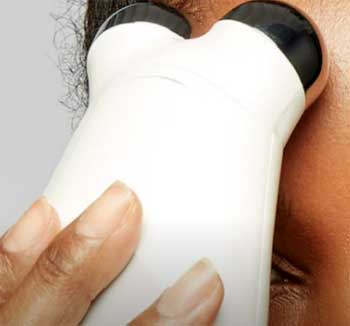
Pros:
Medicube:
Perfect for sensitive skin—its gentle pulses never cause redness or tingling.
A single, easy-to-handle wand simplifies the process—no attachments or tools to swap.
USB-rechargeable and lightweight enough to store in a bathroom drawer.
Provides a subtle, soothing lift that feels natural—not overly tight.
Lower price makes it accessible for introducing microcurrent into your routine.
NuFACE:
Rapidly visible results—many users report noticeable lift within one week.
Multiple attachments target specific zones like lips, under eyes, and jaw.
Adjustable intensity allows customization based on skin sensitivity and goals.
Backed by dermatologists and widely used in beauty clinics.
Longer warranty and responsive customer support with replacement options.
Cons:
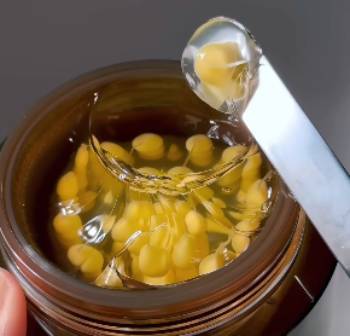
Medicube:
Because it’s gentler, firmer results take longer—4–6 weeks of regular use.
Lacks area-specific attachments for under-eye or lip zones.
No adjustable intensity—may feel too subtle for experienced users.
NuFACE:
Higher initial investment and separate attachment kits cost extra.
Some find the buzzing sensation uncomfortable at higher settings.
Because it’s more powerful, skin prep and gel application need care to avoid irritation.
Heavier than Medicube, and the base unit takes up more storage space.
Maintenance Tips
Clean device with a damp microfiber cloth after each use.
Use only conductive hydrogel approved by the manufacturer for best results.
Charge USB devices fully every week to maintain battery health.
Apply gentle pressure and smooth upward motions during treatment.
Avoid using microcurrent over broken skin or sunburned areas.
Keep internal storage dry—moisture may damage the electronics.
Alternate treatment zones to prevent overworking a single area.
Perform a refresher session once a week after achieving desired firmness.
Track usage dates and times—many devices include app syncing or manual logs.
Avoid direct sunlight or other heating (like sunroom exposure) after treatment.
Also Read: Comparison Of MicroSculpt Vs. NuFace
Medicube Vs. Other Brands
- Medicube Vs. NuFACE
Medicube offers lower intensity wand output that’s well-suited to sensitive, easily irritated skin.
NuFACE delivers stronger, adjustable microcurrent with specialized attachments. Medicube is compact and more budget-friendly—ideal for beginners.
NuFACE is more powerful and targeted but costs more and requires additional attachments for full-zone treatment.
- Medicube Vs. FOREO Bear
FOREO Bear combines microcurrent with T-Sonic pulsations and anti-shock design. It feels sleek and gentle.
Medicube is simpler and cheaper but lacks sonic vibration. Bear boldly lifts and tones with heat and sonic massage, while Medicube offers just consistent microcurrent therapy alone.
- Medicube Vs. ZIIP
ZIIP uses nano-current and microcurrent with app-guided settings. It’s highly customizable. NuFACE is more accessible, with easy plug-and-play controls and no app dependency.
Both are effective, but ZIIP is premium-tier for tech-savvy users who enjoy guided routines and curated programs.
- Medicube Vs. The Shopy NYC Microcurrent Device
Shopy NYC offers a budget microcurrent wand with limited power levels and no attachments. NuFACE delivers far more controlled intensity, FDA-cleared lifts, and service support.
Shopy NYC is good for curious novices, but NuFACE provides stronger, longer-lasting results.
Medicube Vs. Ice Wand or Cold Roller Tools
Ice wands offer cooling and anti-inflammatory benefits but no true skin lift. Medicube gives gradual lift and muscle stimulation.
For skincare refresh, ice tools help reduce puffiness. For long-term contouring, microcurrent wins.
Also Read: Comparison Of ZIIP HALO Vs. NuFACE
Frequently Asked Questions (FAQs)
Many professionals recommend NuFACE Trinity, especially with its eye and lip attachments. For a gentler budget-friendly option, Medicube is solid for beginners.
Yes. It emits low-level handheld microcurrent impulses that help firm and tone underlying skin muscles while retaining minerals.
Yes. Many dermatologists acknowledge NuFACE as safe and effective for wrinkle reduction and skin toning, when used regularly.
The Medicube microcurrent wand uses electrical stimulation for tone. Derma Shot is a separate device using microneedling or derma stamping—not microcurrent—so they serve different purposes.
Final Thoughts
If you’re choosing between Medicube and NuFACE, think about what matters most for your skincare needs.
Medicube is a great entry point—quieter, gentler, and budget-friendly, with consistent lift.
If you want faster firmer results, greater customization, and the ability to treat under the eyes and lips, NuFACE offers more versatility and power.
Both devices can improve firmness and smoothness—just pick based on how intense and targeted you want your skin care tool to be.

